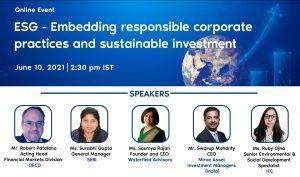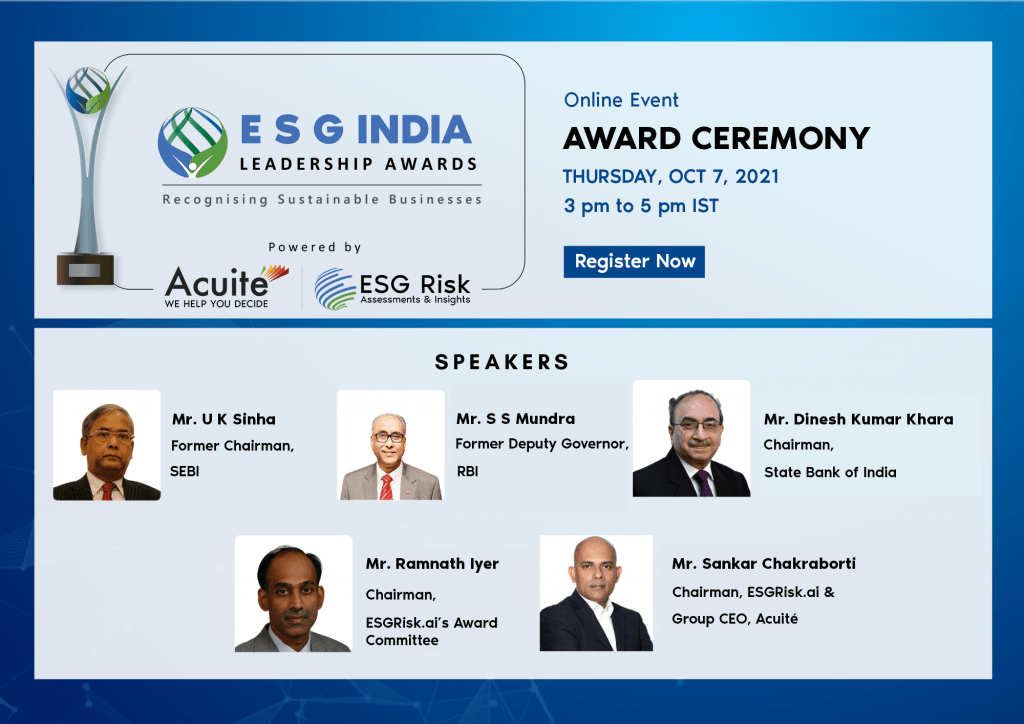History of ESG
History of ESG – 1: A Post Cold-War Innovation
Since its establishment in 1945, the United Nations (UN) has played a pivotal role in shaping initiatives around global development, environmental stewardship, human rights, and economic systems. Over the decades, the nature of its engagement with the business world has undergone significant transformation. Initially, the UN positioned itself as a champion of social justice, often viewing the global economic framework as an obstacle rather than an ally in achieving equitable development.
This early stance was reflected in the New International Economic Order (NIEO), an initiative launched by the G-77 coalition of developing nations in the 1970s. The NIEO advocated for structural reforms and global wealth redistribution to support the Global South. Among its more contentious goals was the regulation of transnational corporations (TNCs). During this period, the UN was deeply skeptical of TNCs, arguing that their unchecked activities widened the economic gap between developed and developing nations. The Commission on Transnational Corporations was established to draft a Code of Conduct for these entities, but this initiative faced significant pushback, particularly from nations like the United States, and was ultimately shelved in 1992.
Despite the challenges faced by NIEO, the late 20th century marked a turning point for the UN’s approach to global business. The Brundtland Report of 1987 introduced the concept of “sustainability,” and the UN Commission on Human Rights began exploring ways to influence corporate behaviour on human rights issues. The most dramatic shift occurred in the 1990s when Kofi Annan, then Secretary-General of the UN, sought to engage businesses as partners rather than adversaries.
A landmark moment came in 1999 when Annan addressed the World Economic Forum in Davos, proposing the idea of a “Global Compact.” He called on businesses to collaborate with the UN to establish foundational principles for a sustainable global economy, particularly addressing labour standards, human rights, and environmental protection. Annan warned that globalization, while transformative, was fragile and could lead to backlash in the form of protectionism, nationalism, and other divisive ideologies if it failed to address social and political disparities.
This appeal led to the creation of the Global Compact in 2000, a voluntary initiative supported by UN agencies and NGOs. The Compact introduced principles on human rights, labour, the environment, and anti-corruption, encouraging businesses to integrate these values into their operations. Despite criticisms of its voluntary nature and corporate-friendly stance, the Compact steadily grew, with participation spreading across various industries and regions. By 2003, the UN further emphasized environmental issues by organizing the first Institutional Investor Summit on Climate Risk, which catalyzed the formation of the Investor Network on Climate Risk.
In response to calls for deeper integration of environmental, social, and governance concerns into financial decision-making, Annan launched a new initiative in 2004, titled “Who Cares Wins.” This effort involved 55 leading financial institutions and resulted in a report that coined the term “ESG.” The report provided actionable recommendations on incorporating ESG factors into asset management and securities research, marking a pivotal step in the evolution of sustainable investing.
History of ESG – 2: Maturity and Restart
The Who Cares Wins report resulted from a joint initiative involving the United Nations and financial institutions, supported financially by the Swiss government. Eighteen financial institutions from nine countries, managing assets exceeding $6 trillion, participated in the initiative. These institutions included major global banks like Goldman Sachs, Morgan Stanley, UBS, Credit Suisse Group, Deutsche Bank, HSBC, Banco do Brasil, and BNP Paribas, alongside insurance companies such as Aviva and investment advisors like Innovest.
The initiative aimed to strengthen financial markets, promote sustainable development, and enhance trust in financial institutions while fostering mutual understanding among stakeholders. It emphasized the importance of integrating environmental, social, and corporate governance (ESG) factors into investment decisions, asserting that doing so would ultimately support the implementation of the UN Global Compact principles across the business world.
The participants believed that ESG integration aligns with the financial industry’s interests, contributing to better management of environmental and social impacts while advancing global sustainable development. According to the report, companies with robust ESG performance could enhance shareholder value by effectively managing risks linked to emerging ESG issues, adapting to regulatory changes and consumer trends, accessing new markets, reducing costs, and improving their reputation and brand equity. The report stressed the need for companies to address the full spectrum of ESG issues relevant to their operations rather than focusing on isolated aspects.
The term “ESG” was deliberately chosen for clarity, avoiding potential misunderstandings associated with terms like “sustainability” or “corporate citizenship.” The report detailed examples under each ESG category, such as climate change for environmental issues, human rights for social concerns, and corruption and bribery management under governance. It acknowledged that relevant ESG issues vary by region and sector, noting the absence of topics like human capital management and board diversity that have since gained prominence.
Governance was explicitly included in the ESG framework, as sound corporate governance and risk management were deemed essential for implementing environmental and social policies effectively. Examples included the importance of transparency, improved accountability, and linking executive compensation to long-term shareholder value. These governance practices were vital for addressing environmental and social challenges, with recommendations drawing from the Conference Board Commission’s findings on corporate governance and public trust issues following scandals like Enron and WorldCom.
The report highlighted the evolution of investment practices, advocating for the integration of ESG issues into standard research and fund management functions. It presented a conceptual framework transitioning from traditional practices to comprehensive ESG integration across asset classes, contrasting with the earlier Socially Responsible Investment (SRI) movement that relied on ethical and moral criteria through negative screens. Executives from major institutions emphasized the alignment of ESG considerations with risk-adjusted financial performance and shareholder value, asserting that such analyses should become standard for financial analysts.
Addressing materiality, the report expanded its scope to include broader definitions, longer time horizons (10 years and beyond), and intangible factors impacting company value. It linked these aspects to universal principles and ethical guidelines, demonstrating their potential material impact on investment value.
Concluding, the report outlined the initiative’s plans for outreach to deepen, specify, and implement its recommendations. This included engaging accounting standard-setting bodies like FASB and IASB, professional organizations like AIMR and EFFAS, stock exchanges, investor relations associations, and other platforms such as the UNEP Finance Initiative and the World Economic Forum. The participants also intended to assess ESG-related research needs among clients while fostering dialogue among investors, companies, regulators, accountants, and NGOs.
History of ESG – 3: Stability and Recognition
The rise of ESG (Environmental, Social, and Governance) as a concept in the investment community represents a strategic shift that has grown rapidly over the past two decades. Originally coined in the Who Cares Wins report, the acronym gained prominence through institutional backing, starting with the UN’s efforts and initiatives like the UNEP FI and the Principles for Responsible Investment (PRI). Early challenges to ESG adoption, such as concerns over fiduciary duty, were addressed by a pivotal report from Freshfields Bruckhaus Deringer. This report concluded that integrating ESG considerations into investment decisions was legally permissible and even necessary in many jurisdictions, providing a critical resource for institutional investors.
The PRI further solidified ESG’s foothold by establishing voluntary principles that encouraged the integration of ESG factors into investment policies and practices. Simultaneously, organizations like the Global Reporting Initiative (GRI) expanded their focus from environmental guidelines to comprehensive ESG standards, paving the way for widespread adoption. Events organized under the Who Cares Wins initiative also provided a platform for key stakeholders, including asset managers, corporations, and NGOs, to collaborate and push for ESG integration.
However, the framing of ESG involved navigating diverse interests and striking compromises. The “E” appealed to environmental advocates and aligned with sustainability efforts, while the “G” resonated with mainstream corporate governance practices. The “S,” addressing labor and social issues, was more contentious but was strategically placed between the others to ease its acceptance. This careful positioning helped shift the narrative away from “ethical investing” or corporate philanthropy toward aligning ESG with long-term financial value.
As the concept matured, the “Big Three” asset managers—BlackRock, Vanguard, and State Street—played a pivotal role in mainstreaming ESG. By incorporating ESG factors into their investment strategies, engagement policies, and public communication, these firms emphasized the relevance of ESG to corporate performance and risk management. Leaders like Larry Fink of BlackRock tied ESG to notions of corporate purpose and sustainability, highlighting its impact on long-term performance and market trends.
The popularization of ESG also spurred corporate governance changes, including increased shareholder activism on ESG-related issues. Despite concerns about the concentration of power among major asset managers, ESG investing has soared into trillions of dollars. The emergence of “anti-ESG” funds underscores the ubiquity of the term and its centrality to contemporary investment discourse. Over time, ESG has transcended its origins to become a global standard for integrating environmental, social, and governance considerations into financial decision-making.







